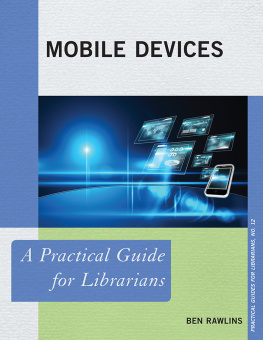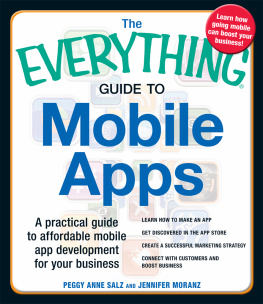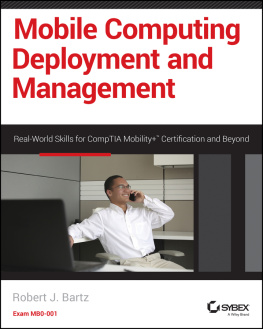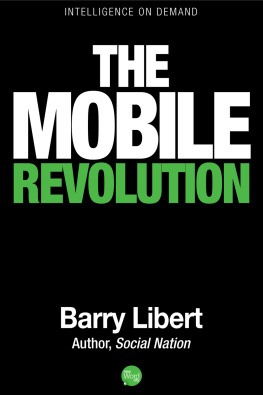mobilized
mobilized
An insiders guide to the business and future of connected technology
SC Moatti

Mobilized
Copyright 2016 by Sophie-Charlotte Moatti
All rights reserved. No part of this publication may be reproduced, distributed, or transmitted in any form or by any means, including photocopying, recording, or other electronic or mechanical methods, without the prior written permission of the publisher, except in the case of brief quotations embodied in critical reviews and certain other noncommercial uses permitted by copyright law. For permission requests, write to the publisher, addressed Attention: Permissions Coordinator, at the address below.
|
|---|

| Berrett-Koehler Publishers, Inc.
1333 Broadway, Suite 1000
Oakland, CA 94612-1921
Tel: (510) 817-2277, Fax: (510) 817-2278
www.bkconnection.com |
Ordering information for print editions
Quantity sales. Special discounts are available on quantity purchases by corporations, associations, and others. For details, contact the Special Sales Department at the Berrett-Koehler address above.
Individual sales. Berrett-Koehler publications are available through most bookstores. They can also be ordered directly from Berrett-Koehler: Tel: (800) 929-2929; Fax: (802) 864-7626; www.bkconnection.com
Orders for college textbook/course adoption use. Please contact Berrett-Koehler: Tel: (800) 929-2929; Fax: (802) 864-7626.
Orders by U.S. trade bookstores and wholesalers. Please contact Ingram Publisher Services, Tel: (800) 509-4887; Fax: (800) 838-1149; E-mail: Ordering for details about electronic ordering.
Berrett-Koehler and the BK logo are registered trademarks of Berrett-Koehler Publishers, Inc.
First Edition
Hardcover print edition ISBN 978-1-62656-740-5
PDF e-book ISBN 978-1-62656-741-2
IDPF e-book ISBN 978-1-62656-742-9
2016-1
Project management and interior design by Dovetail Publishing Services
Cover design and production by Ran Lui and Dan Tesser
To Louise
Contents
Foreword
by Nir Eyal
I remember the first time I saw a URL. It was 1995, I was a teenager, and I was flipping through my hometown newspaper when I spotted a movie ad. At the bottom were the words Check us out online at www...
I had no idea what www meant, but being the nerd I was (and still am), I rushed to my computer. Eagerly, I waited 5 minutes for the spinning disks to boot up and weathered another 10 minutes of crashes and reboots.
Finally, I was able to type the URL into my Internet service providers search bar, and Prodigy promptly took me nowhere. Instead of a web page, I got an error message.
Not that it would have mattered much.
Let me remind you that 1995 web pages were truly terrible. A look back at websites of yesteryear reveals hard-to-navigate, text-laden walls of words that no one would want to interact with today.
No wonder relatively few offline businesses shifted their resources into building an online presence. It would take years, if not a decade, after the first web browser was born for businesses to realize the importance of that lowly www.
Today, having a website is a requirementits the modern-day equivalent of hanging a shingle, announcing you are open for business.
The lesson here is thatat firstsweeping industry changes can easily be dismissed. Theyre often seen as something companies can get to later on, when time allows and budgets free up. But, of course, later on often comes too late and, while laggards are still deciding what to do, their competitors are cashing in.
As of this writing in late 2015, were just seven years into the mobile revolution as marked by the opening of the Apple App Store in 2008and yet what an incredibly rapid revolution it has been.
Consider this: whereas most companies just a decade ago lacked even a basic mobile presence, today entire multibillion-dollar enterprises operate only in the mobile space. In fact, many of the biggest players and service providers globallysuch as Uberonly exist in mobile.
Like so many did when websites first arrived, small and medium-sized businesses today have ignored or neglected their mobile strategy. However, giving
In this book, my friend Sophie-Charlotte (SC) Moatti gets you ready for whats to come.
I first met SC three years ago. She was working at Facebook and invited me to speak to her team. I was impressed. Im going mobile only, she told me. Trying to get my work done without a computer. Im almost there... When everyone else was still carrying around a laptop, SC was pioneering the effective use of mobile technology in ways the rest of us had yet to see.
SC recognizes the vital role mobile applications will play in our future. From her years of practice in mobile, she honed her craft and learned how to build mobile services and apps that get users engaged and keep them coming back.
In this book, she lays out the ground rules for what works and what doesnt in mobile. She shares insights she gleaned working at Facebook, Nokia, and other companies to give us her unique perspective on how to, in her words, build products that count.
Enjoy getting mobilized!
mobilized
Introduction
Experiencing the Mobile Revolution Firsthand
Mobile has eaten the world.
Its a technology that has greater power than most of the technologies that came before it. Whats more, its power is only going to grow stronger, its reach into our lives deeper.
In this book, I am going to explain how mobile came to be, what makes the best mobile products, and how these factors influence the present and future of the industry.
To begin, lets talk about where mobile gets its power and how I became interested in it.

Most of us have a fairly simple way to keep technology at bay when we want to distance ourselves from it: we walk away. We leave the office or factory at the end of the workday, we turn off the computer, we switch off the TV....
But what of mobile products? Do we walk away from them the way we disconnect from most technology?
We hope we can simply turn off our smartphones, but very few of us do. In fact, statistics show that two people out of three place their mobile devices on the nightstand next to their bed. Its the last thing we put down before we go to sleep and the first thing we check when we wake up.
Were not being forced to sleep with our mobile devices within arms reach. We want to do it. We dont want to be separated from it. Its become whats called a sticky technology, where weve formed such a strong attachment to our mobile devices that our use of them is an ongoing, almost unconscious habit.
What if instead of a smartphone, our favorite mobile device was a watch? An earpiece? A pair of contact lenses? A smart patch? A smart pill? A digital nerve ending? As mobile devices shrink, they get more and more integrated into everyday objects around us and more and more deeply embedded within us.
The mobile revolution isnt simply a technological invention from which we can disconnect at any time. We cant disengage from the air we breathe or from the feet that carry us. Similarly, in todays world we cant disconnect from our mobile products.
Next page









